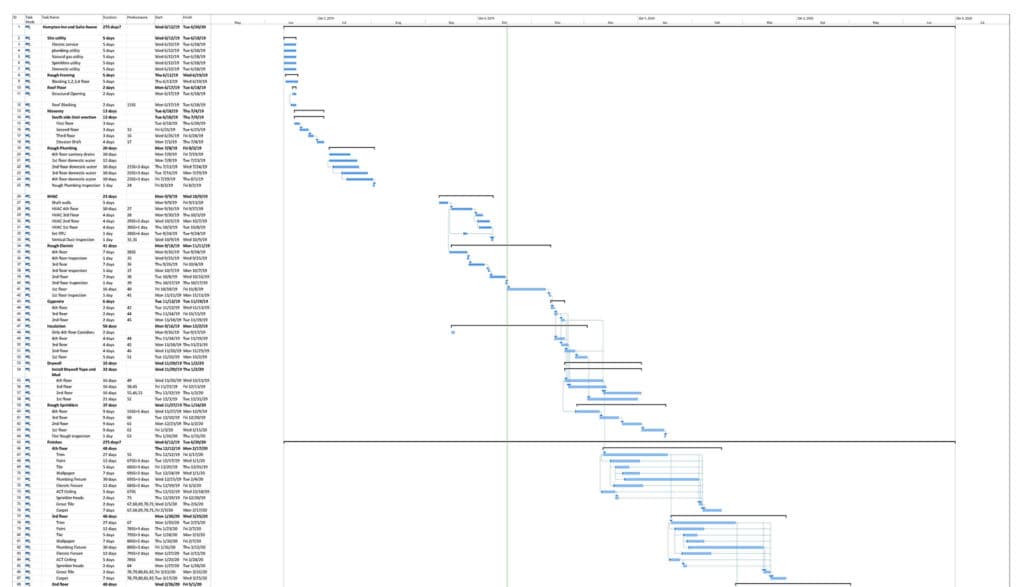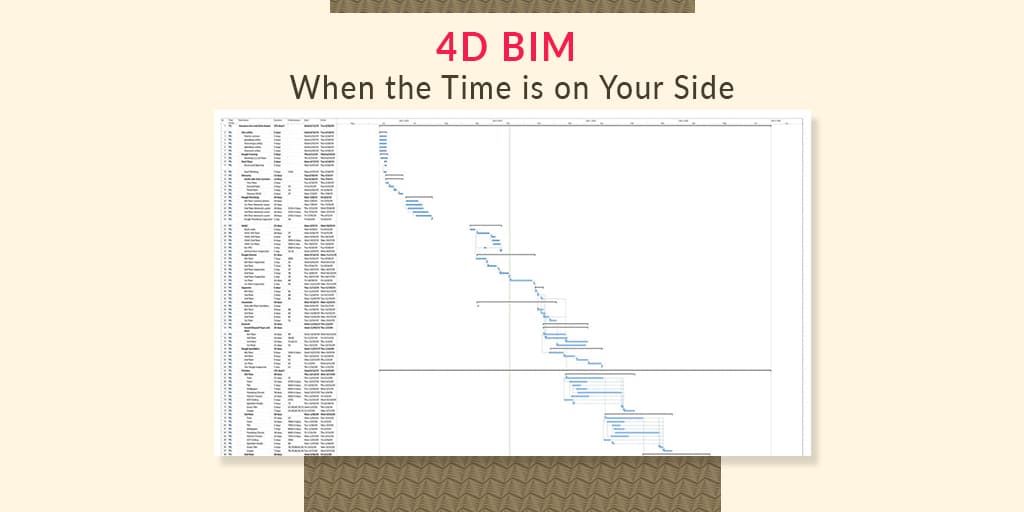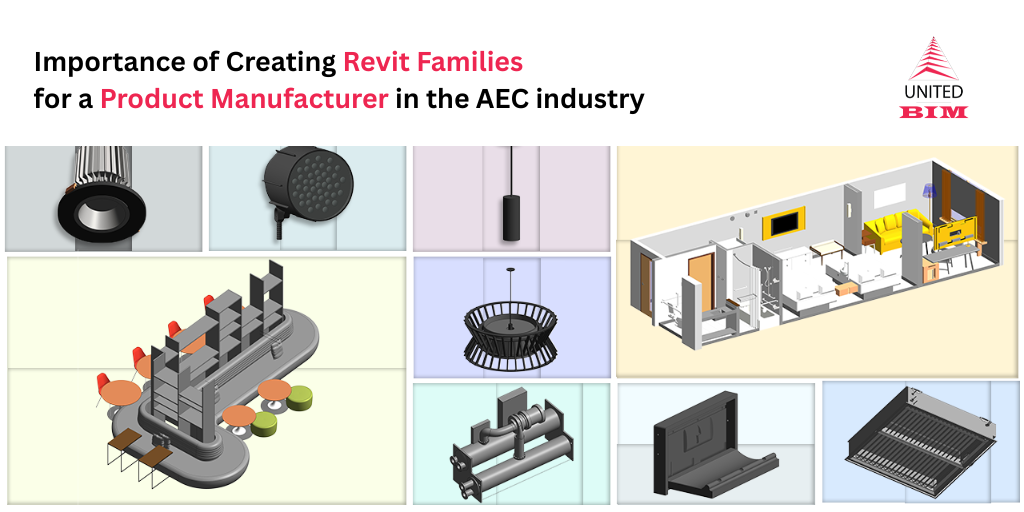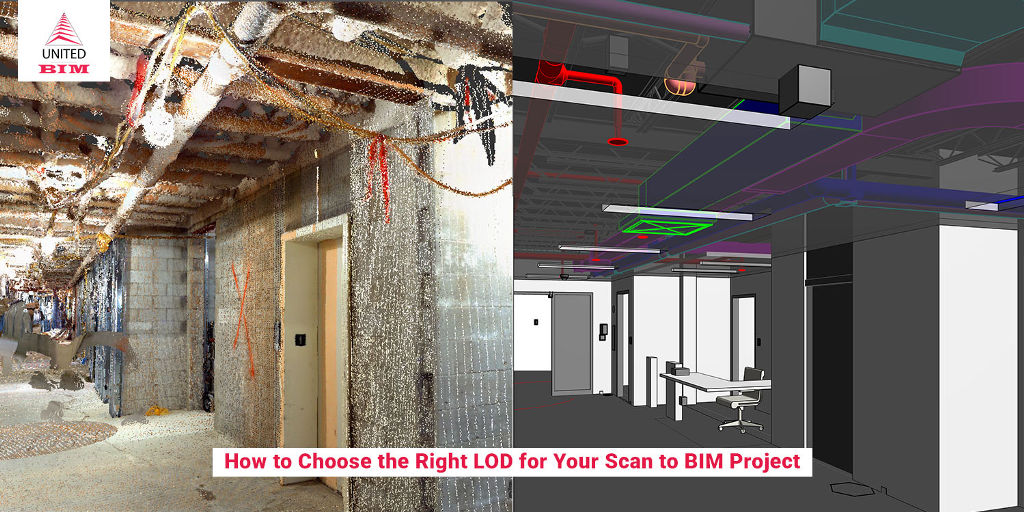Last updated on: January 10, 2025
Table of Contents
As you go deeper into understanding Building Information Modeling, you understand how it is beyond graphical analysis or even just modeling. BIM, by definition, was meant to integrate building information into building models. The different dimensions of BIM represent exactly the type of information you are integrating with the 3D model.
So far, the industry has adopted three different progressions in the BIM dimensions – 4D, 5D, and 6D. 4D represents the layer of time with the 3D model. 5D represents the layer of the cost being added to the 3D model. And 6D represents asset management, largely relevant to the post-completion phase of the project.
Understanding the 4D BIM concept is very crucial as it can help in huge cost-saving. Below is a quick primer on the concept of 4D BIM, evolution, and benefits in the construction process.
The Evolution of 4D BIM
When Computer-Aided Drawings were first brought to construction and infrastructure project management, it has enhanced efficiency. AEC professionals and project managers have a better hold on their project, with lesser resources, greater accuracy, and with minimum time. But BIM’s true potential was realized when project management teams were able to integrate 4D BIM. 4D BIM adds an element of time into the 3D model.
So, in brief: 3D Model + Time Data = 4D BIM
The operating mechanism of a 4D BIM is very simple. You take the 3D Model and develop it across a timeline. This particular progression was essential to the infrastructure development industry because it was infamous for its inefficiencies on a large scale. The industry was not entirely responsible for this. The technology was lagging.
Before operational 4D BIM became mainstream, construction planning and project execution were herculean tasks. The construction manager and project planner had to be in tandem, all day long, for several weeks in a row. Hundreds of employees were guided by a binder of plans created as renditions of the same project from different angles and dimensions. You miss one part – and all of a sudden you would force the on-site engineer to do ‘on-ground R&D’ just to keep the project running. This created safety hazards and brought obvious financial risks to the entire project.
Related blog: What are BIM Dimensions – 3D, 4D, 5D, 6D, and 7D BIM Explained | Definition & Benefits

Don’t have the time to read the whole blog, no worries you can download it and read it at your convenient time.
Looking to develop 4D BIM Model for your project?
4D BIM - Delivering Projects on Time.
By developing the model alongside a timeline, you can accurately see:
- How will the ground zero site develop into a completed model, as per the plan?
- How do different phases of the project interact with each other? This helped in mapping dependencies between all suppliers and parties involved.
- A singular system where all the project teams could monitor one plan and one dimension of the project. All of a sudden, the need for interpreting the technical drawings and even the CAD was eliminated.
- The tracking of supplier inputs became easier. Anyone could simply get access to the Common Data Environment and see each project team’s contribution, parallel to the timeline.
In 1998, Sir John Egan said “The integration of design information with virtual modeling will help in eliminating on-ground revisions and inefficiencies with ease.”
4D BIM truly stood by this oracle-like forecast and eliminated large chunks of inefficiencies in the construction planning and development phases of projects.
If you want to understand the impact of 4D BIM on construction projects, you should get in touch with a firm that has operated both with and without 4D BIM. The simple efficiency of its workflow will reflect in the smiles you see after the firm adopted 4D BIM.
By simply adding another layer of data to the 3D Model of the project, 4D BIM brought together several benefits to project teams. While 5D BIM is attributed to cost and 6D BIM is attributed to operations & management of the project post-completion, both of them would be nearly impossible without successful implementation of 4D BIM during the construction phase.
More than 80% of contractors have got positive returns with their investment in BIM. A good part of this can be attributed to 4D BIM, with clearly demonstrable benefits to the construction process:
How did 4D BIM add the necessary dimension of efficiency in construction?
1. Project development became a low-risk game
One of the biggest issues in construction management is handling on-site expenses. When budgeting for a project, this is one of the more severely concentrated overheads. If not taken care of, it can affect the productivity and ROI of the investment made.
4D BIM-created a lab of experiments for all the planners, designers, and engineers. Instead of taking the plan to site and depending on on-site comprehension, the entire team could learn everything about the project without having shed millions. This also created a transparent feedback loop between all the teams. Now, people became more receptive to feedback since accepting loopholes in the plan or the design did not mean loss of millions; it now meant a simple reconstruction or redesigning of that particular part.

2. Proposal drafting and tendering became streamlined processes
Before 4D BIM, no one exactly knew the workflow and the final rendition of the project. The design team understood the project’s aesthetics while the engineering team understood the project’s execution. They essentially spoke different languages and this created a divide. These dividers would often lead to miscommunications, redesigns, and project improvisations.
By adding a dimension of time to the 3D Model, teams got strong visualization and project tracking systems in place. Although these would become more important in the later stages of the project, they helped a lot in developing project drafts and even with tendering.
4D BIM showed which team of contractors, developers, and engineers was responsible for what phase of the project. This way, each level of the project was allotted to a specific group of people. This helped with a better assessment of risk for both the planner and the developer and allowed them to add specific contingencies and project responsibility covenants to make tendering a fair process for everyone.
3. Better coordination between professionals
Big infrastructure projects pose a different type of problem – there are a lot of people involved in the hierarchy. Whether it is the local community, state authority, or even the developers, contractors, and suppliers to the project – it becomes difficult to keep a track of all the possible design & planning documents. More than that, making each stakeholder aware of all the aspects of the design would eventually become a problem in communication. Even good projects that were not communicated with absolute accuracy would be at the risk of getting tossed off.
4D BIM made sure that the project’s development was visible way before the site was even ready for the foundation. This allowed teams to manage expectations and truly communicate the exact techniques they were putting to use.
In Conclusion
4D BIM is truly a spectacular step in construction project management. By just adding the time data to the 3D Model, it brings significant value to the team and reduces inefficiencies by a multitude. Real-time data exchange ecosystem helps teams interact on all levels. But till we reach there, we can integrate 4D BIM into our project management processes and avail its benefits with the right practices in place.
About the Author

Coordination Manager / VDC Manager at United BIM
With over 10 years of experience in the AEC industry, Akash Patel is a seasoned Coordination Manager and VDC Manager at United BIM. His expertise lies in managing complex MEP-FP coordination projects and leveraging cutting-edge BIM technology to ensure seamless collaboration and precision. Akash is dedicated to delivering high-quality, detailed models that meet the demands of modern construction. He is passionate about optimizing workflows and driving innovation within the BIM field.








